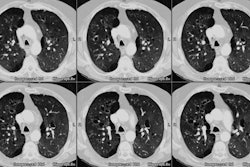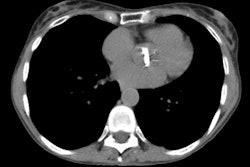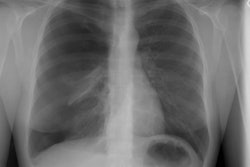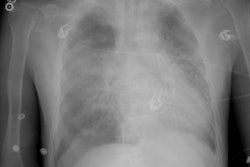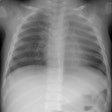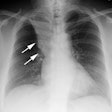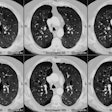Radiology 1997 May;203(2):361-367. Airway obstruction in asthmatic and healthy individuals: inspiratory and expiratory thin-section CT findings.
Park CS, Muller NL, Worthy SA, Kim JS, Awadh N, Fitzgerald M
PURPOSE: To determine differences in computed tomographic (CT) findings in asthmatic and healthy individuals and to correlate the findings with severity of airway obstruction. MATERIALS AND METHODS: Thirty-nine asthmatic patients and 14 healthy subjects were prospectively evaluated with thin-section CT. Inspiratory CT scans were subjectively evaluated for presence of bronchial wall thickening, bronchial dilatation, and mosaic lung attenuation; expiratory scans were subjectively evaluated for presence of air trapping. Objective measurement of bronchoarterial-diameter ratio was performed on inspiratory scans. CT findings were compared with pulmonary function test results. RESULTS: Bronchial wall thickening, severe air trapping, and reduced bronchoarterial-diameter ratio were observed more commonly in asthmatic patients than in healthy subjects. Bronchial wall thickening was more prevalent among patients with severe airflow obstruction (10 of 12 readings [83%]) than in patients with normal airflow (15 of 40 readings [38%]) or mild obstruction (nine of 26 readings [35%]). Other subjectively determined CT findings did not correlate with pulmonary function test results. The mean bronchoarterial-diameter ratios +/- 1 standard deviation were 0.65 +/- 0.16 in healthy subjects and 0.60 +/- 0.16, 0.60 +/- 0.18, and 0.48 +/- 0.11 in patients with normal airflow and mild and severe obstruction, respectively. CONCLUSION: Thin-section CT is of limited value in distinguishing asthmatic patients with normal airflow or mild airflow obstruction from healthy subjects.
PMID: 9114089, MUID: 97268741
